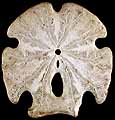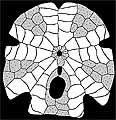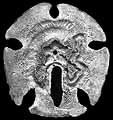The Echinoid Directory
Encope L. Agassiz, 1840, p. 5, 17
[=Moulinia L. Agassiz, 1841, p. 3, 139, type species Scutella cassidulina Desmoulins 1837 [a juvenile Encope, possibly Scutella emarginatus Leske, 1778]; = Moulinsia Agassiz, 1847, p. 81 (non Grateloup, 1841)=Desmoulinaster Lambert & Thiery, 1914, p. 294 nomen novum pro Moulinia; =Echinoglyphus Gray, 1852, p. 37, type species Scutella emarginatus Leske, 1778; =Ravenellia Lutken, 1864, p. 168, type species Scutella macrophora Ravenel, 1843; =Macrophora Conrad, 1865, p. 134, type species Scutella macrophora Ravenel, 1843; =Encope (Echinadesma) Phelan, 1972, p. 126, type species Encope micropora L. Agassiz, 1841 ]
| Diagnostic Features |
|
|---|---|
| Distribution | Early Miocene to Recent, the Americas. |
| Name gender | feminine |
| Type | Encope grandis L. Agassiz, 1841, p. 57, by monotypy. |
| Species Included |
|
| Classification and/or Status |
|
| Remarks |
|




